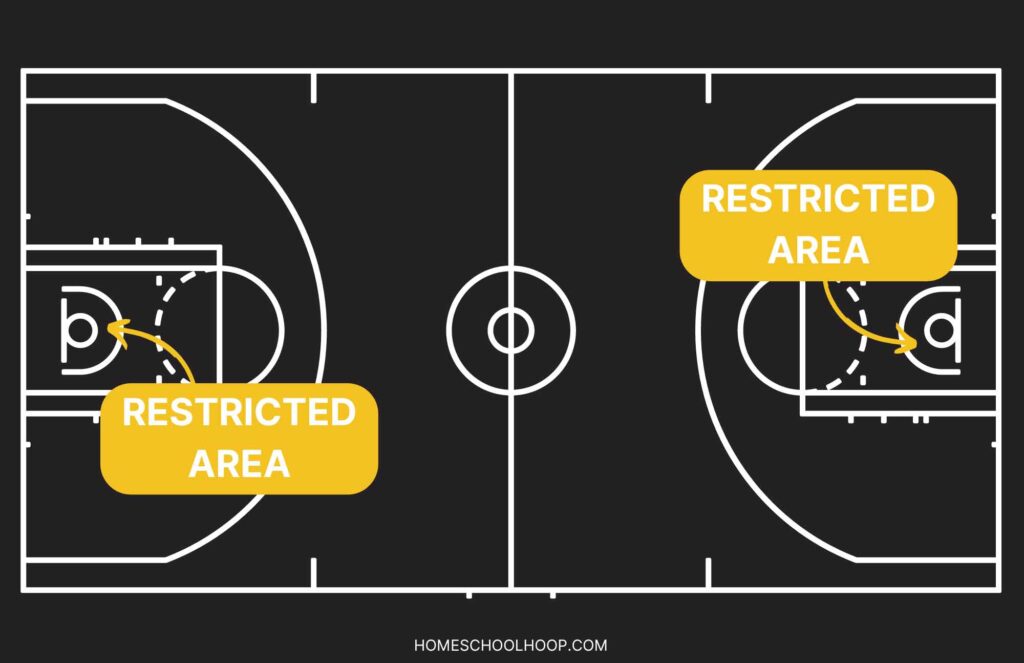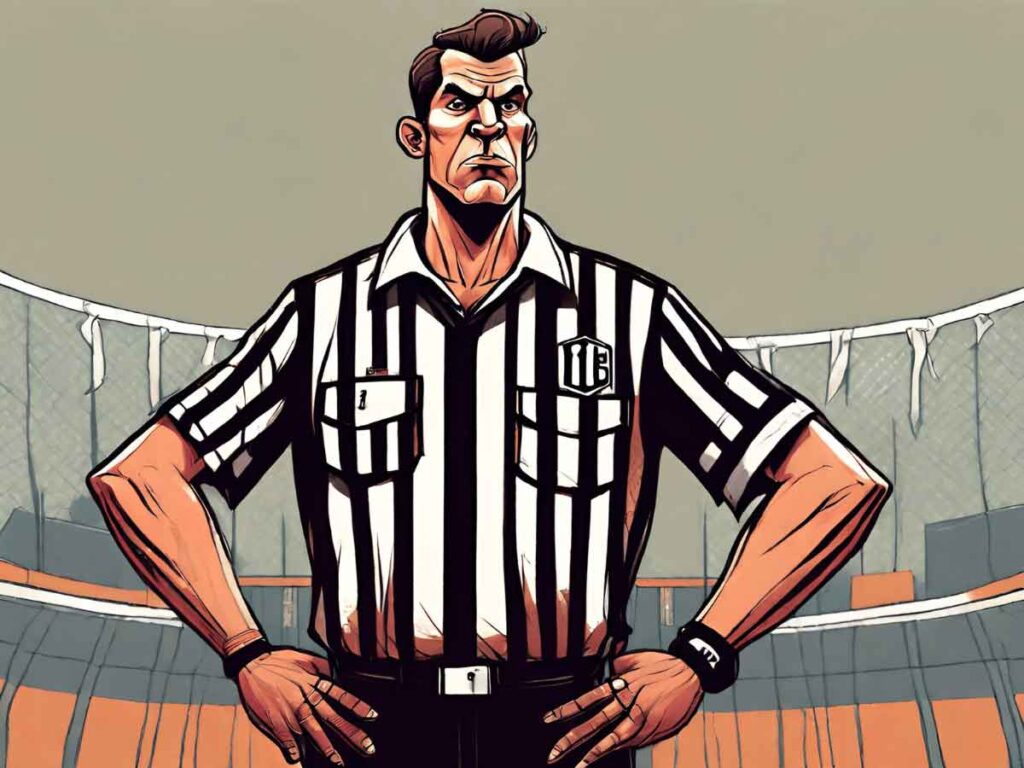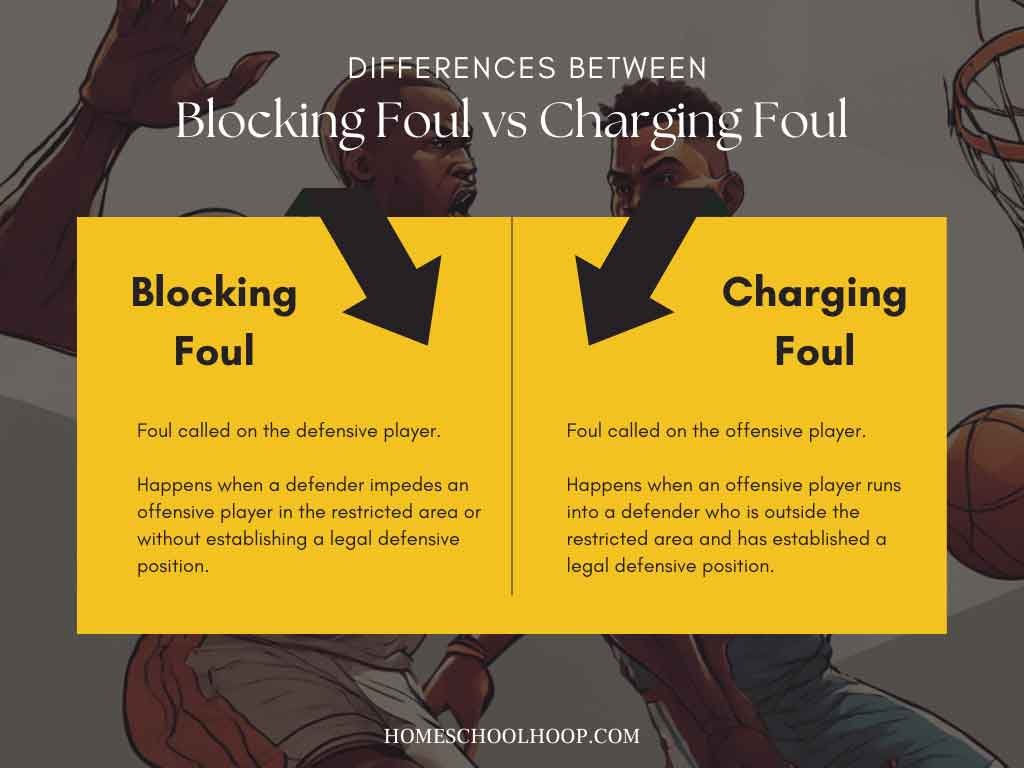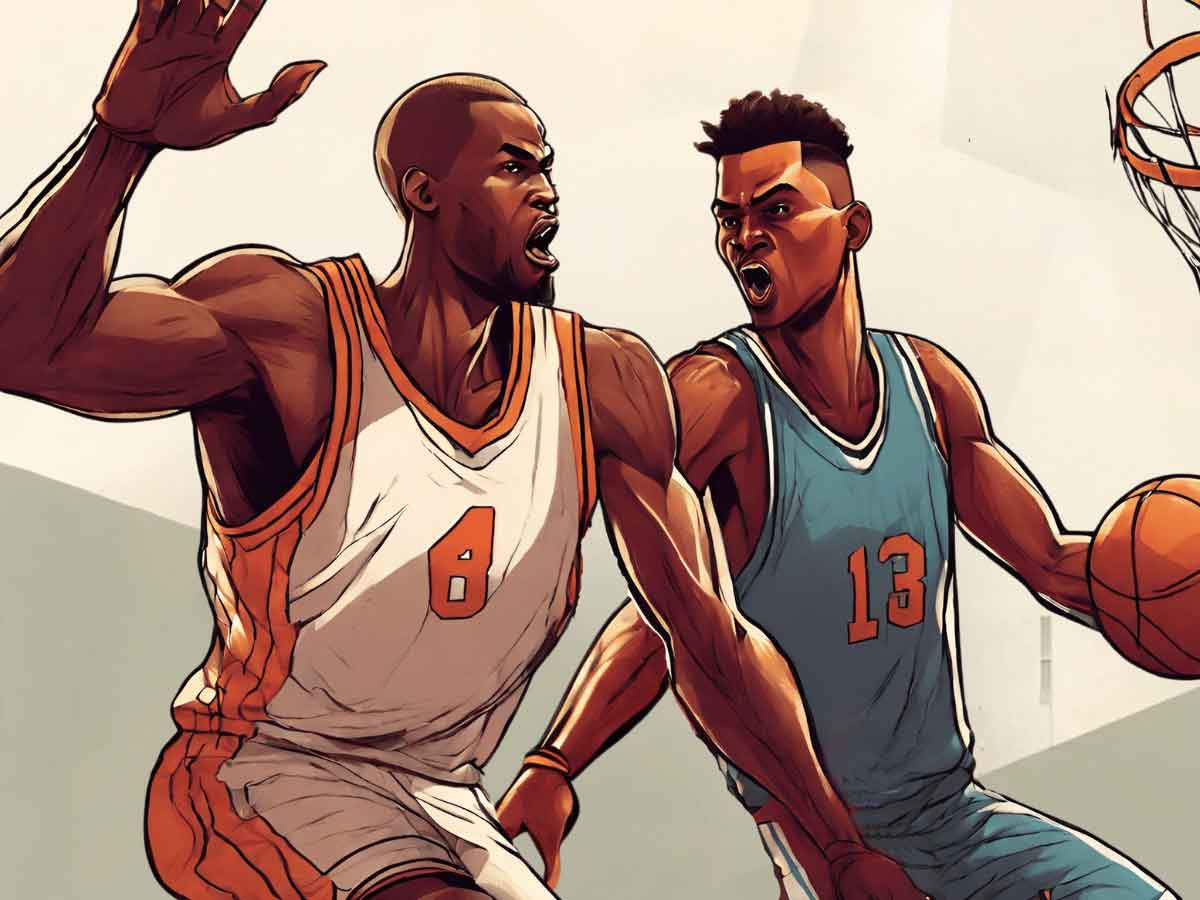It’s the foul you’ll hear called most often – the blocking foul. A blocking foul is when a defender makes contact with an offensive player without being in a legal position. This concept is important for everyone in the basketball realm – players, coaches, and fans – especially since it’s easily mixed up with the charging foul.
Key Takeaways:
- A blocking foul happens when a defender, not in a legal defensive stance, uses their body to impede the path of an offensive player.
- These fouls add to a team’s and player’s foul count and possibly lead to free throws.
- Avoiding blocking fouls takes agility, defensive positioning, and anticipation.
The impact of a blocking foul extends beyond the immediate penalty; its ripple effect shapes player aggressiveness and team strategies, and sometimes sways game outcomes. In this article, we’ll explore the intricacies of blocking fouls, how they stand apart from charging fouls, the aftermath of these calls, and tips for defenders to steer clear of committing them.
Understanding Blocking Fouls
Let’s break down one of basketball’s pivotal rules: the blocking foul. It’s the intersection where well-intentioned, aggressive defense meets offense, sometimes leading to moments that aren’t exactly by the book.
What is a Blocking Foul in Basketball?
A blocking foul is essentially about illegal physical contact by the defense. Here’s the breakdown:
- Imagine a defender stepping into the path of an attacking player without being properly set up. That’s a no-go in basketball language. Being “properly set up,” aka legal guarding position, means having both feet planted, not moving forward, and facing the opponent squarely before any contact happens.
- A blocking foul almost always happens because a defensive player “bodies” a ball-handler driving to the basket. However, any offensive player on the move can be blocked illegally.
- The rule of thumb? If the defender is moving, hasn’t got their feet ready, or isn’t facing the offensive player straight on at the time of contact, the refs are likely going to call it a blocking foul.
- This type of foul is pivotal because it can swing the game’s momentum, offer up free throws, and force a team to rethink their defensive strategy for the rest of the game.
One consideration of this rule is whether contact between the offensive and defensive players happens within the restricted area. The restricted area in basketball is a four-foot arc located underneath the basket where defenders cannot draw charges. A blocking foul will always be called when contact is made in this area, even if the defender successfully beats his opponent to the spot and is in a legal guarding position.

Blocking Foul Hand Signal
When it comes to communicating decisions on the court, referees have a unique language—their hand signals. For a blocking foul:
- The ref will blow the whistle to stop play and signal to the official scorer’s table by placing both hands on their hips. This gesture is the universal sign for a blocking foul in basketball.
- It’s a simple yet effective way to inform everyone, from the official scorer’s table to the coaches and fans, what call has been made without shouting over the noise of a game.

The Impact of Blocking Fouls
So, you’ve heard the ref’s whistle, and seen the hands on the hips – a blocking foul has just been called. What’s next?
What Happens After a Blocking Foul is Called?
Here’s what unfolds:
- Personal and Team Foul Count: Each blocking foul counts toward a player’s and the team’s foul tally. Too many, and players might have to sit out, or the team could give the other side free shots if they’re in the bonus.
- Possession and Scoring Opportunities: The team on offense keeps the ball, getting another shot at the basket. And if the foul was during a field goal attempt, the player fouled gets to take free throws – those uncontested shots from the line.
- Momentum Shift: Ever watched a game flip on its head? A blocking foul at a critical moment can do just that, handing over the energy and advantage to the other team.

Now, think bigger – beyond just the next few seconds of play. If a player keeps getting called for blocking fouls, they might end up watching from the sidelines to avoid disqualification for too many fouls. Teams might need to rethink how they’re playing defense to avoid more fouls and giving away free points. And let’s not forget confidence – both personal morale and team spirit can take hits if these fouls keep piling up.
Learn more: How many fouls to foul out in the WNBA?
How to Avoid Committing Blocking Fouls
Avoiding blocking fouls is key to effective defense. Here’s how players can shut down their opponent while staying out of foul trouble.
Body Positioning
First up, your stance matters a lot:
- Establish a Legal Guarding Position: Get your feet set and face the opponent directly before they make contact. This means predicting where they’re going and getting their first.
- Keep a Fair Distance: Don’t invade your offensive player’s space more than you need to. This is particularly important if the player you’re guarding is faster than you. Keeping a little space gives you more time to move and reduces the chance of unnecessary contact.
Master Your Footwork
Good defense is grounded in movement:
- Quick Feet: Practice closing out and moving side-to-side without crossing your feet. This keeps you ready to shift in any direction without losing balance.
- Stay in a Stance: An athletic stance with knees bent gives you better stability and makes it easier to react quickly.
Anticipation and Awareness
Reading your opponent can save you from fouls:
- Watch the Player: Focus on your player’s torso, rather than getting distracted by the ball in their hands. It’s the best indicator of where they’re going, regardless of any jab or crossover.
- Study Your Opponent: Each player has tendencies. Study up by watching film so you know the favorite moves and go-to patterns of players you’ll be guarding. This will help you be ready to counter them without making contact.
- Know Where the Restricted Area Is: Stay aware of the restricted area under the basket to position yourself outside of this area when attempting to draw a charge. If you’re defending and you’re inside this area, any contact made is likely to be called a blocking foul, not a charge.
Blocking Fouls vs. Charges
Blocking and charging fouls in basketball are two related and often misunderstood calls. Let’s break down how the two differ.

Here’s what sets them apart:
- Blocking fouls: Are called on a defensive player. They occur when a defender impedes the progress of an offensive player without first establishing a legal defensive position. The defender is usually moving and not set.
- Charges: A charge in basketball is called an offensive player. They happen when an offensive player runs into a defender who is outside of the restricted area and has established a stationary, legal defensive position.
Refs have a tough job here because deciding whether a defender was set or still moving comes down to a split-second judgment. They have to quickly assess the players’ positions, movements, and the timing of the contact. Plus, they have to make sure that the defender is outside of the restricted area.
FAQs
What is a blocking foul in basketball and how is it called?
A blocking foul is called when a defender impedes an offensive player’s progress within the restricted area or without having established a legal defensive position. The referee calls it by blowing the whistle and signaling with both hands on their hips.
How can players avoid committing a blocking foul?
Players can avoid blocking fouls by anticipating the offensive player’s movement, practicing good footwork to stay in front of their offensive player, and establishing a legal defensive position.
What is the difference between a blocking foul and a charge in basketball?
The difference lies in the defender’s position. A blocking foul is called when contact is made while the defender is not in a legal position or is within the restricted area. A charge occurs when the offensive player initiates contact with a defender who has established a stationary, legal position outside of the restricted area.
Can you get a blocking foul in the restricted area?
Yes, you can get a blocking foul in the restricted area if the defender makes illegal contact with an offensive player. The restricted area is designed to prevent players from camping beneath the basket, and defenders cannot legally take a charge in this area.
SHARE YOUR EXPERIENCE
Today, you learned about the blocking foul in basketball.
So we want to know: Have you ever played in a game where a blocking foul decision dramatically changed the outcome?
Tell us about the situation in the comments.


